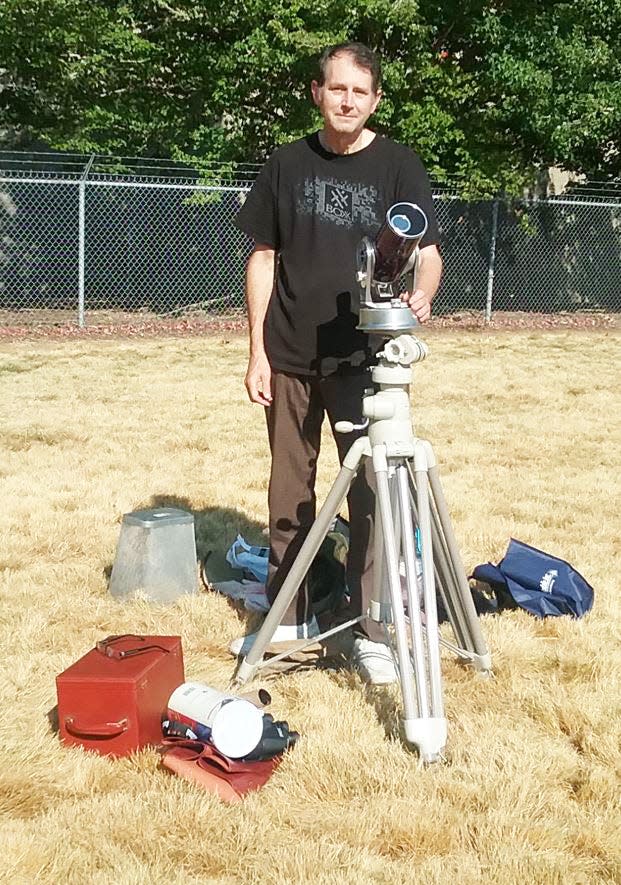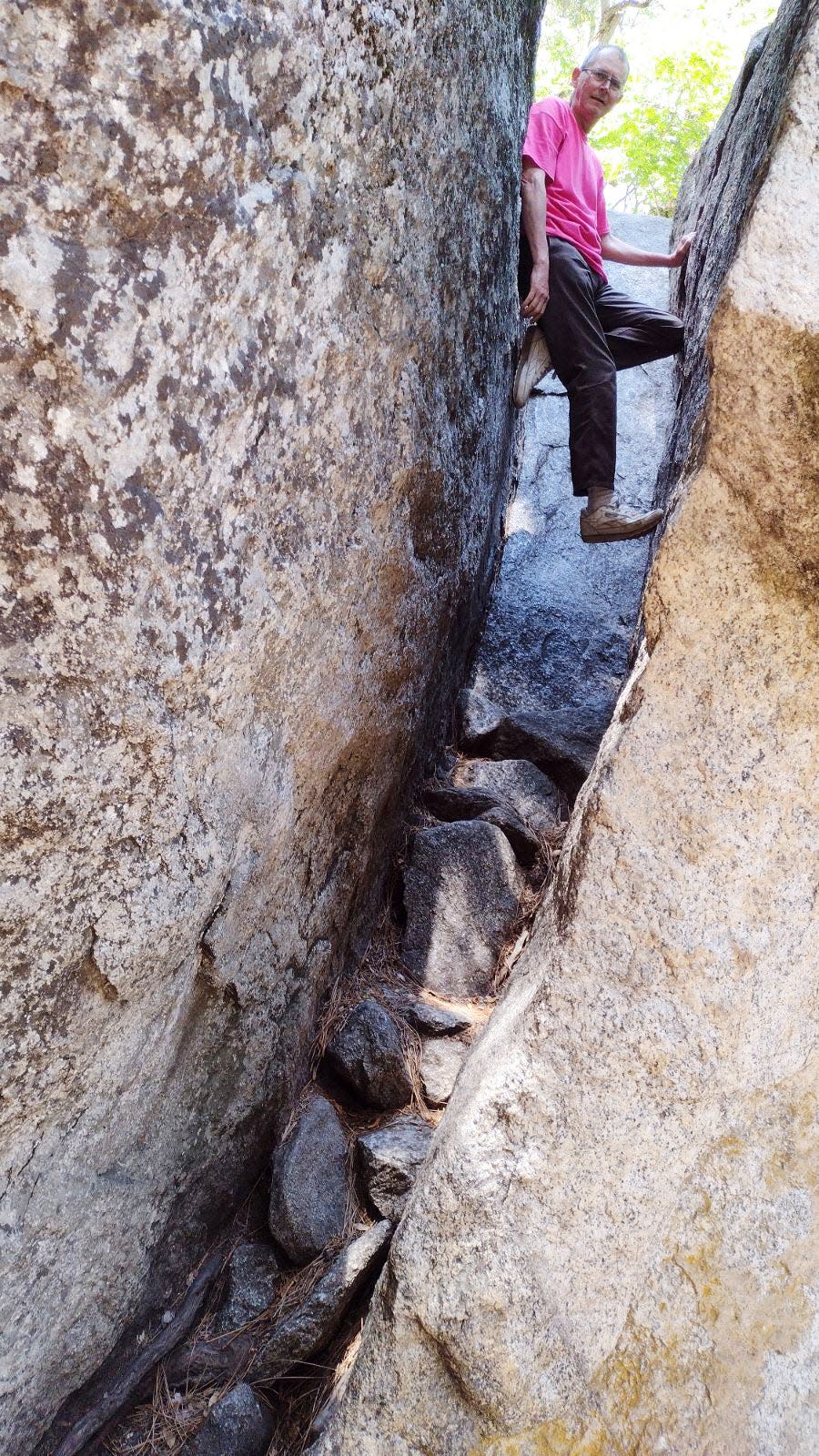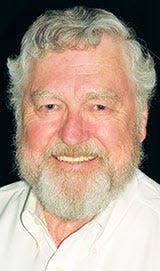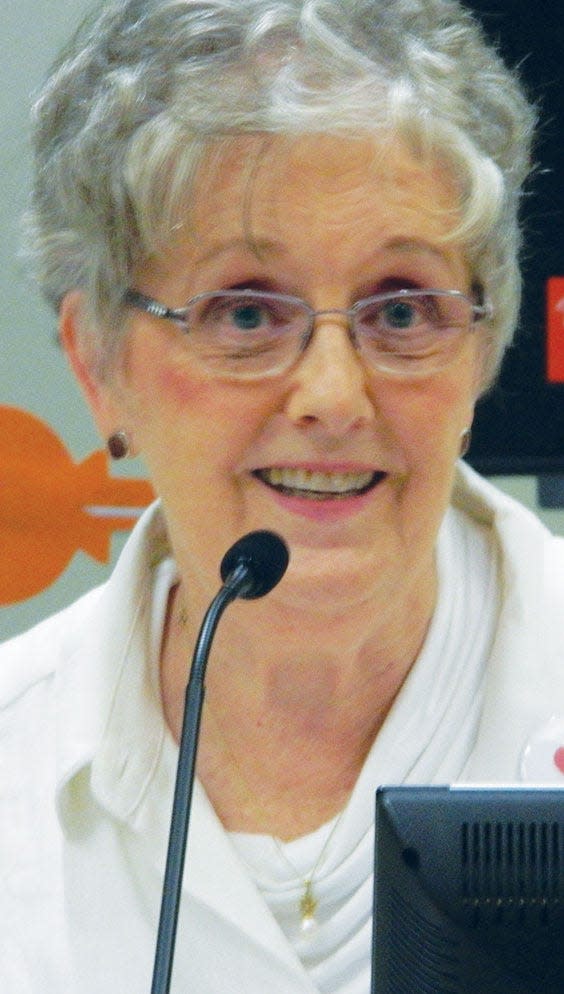ORHS grad aids the world's doctors in removing cataracts
Benita Albert brings us part two of the story of another Oak Ridge Schools alumni. She tells of Chris Keller's many interests, inventions, and discoveries. An amazing read! Enjoy…
***
“Cataracts are the leading cause of blindness in the world, a condition that is curable. There are millions of people around the world who have cataracts, and yet, no access to treatment. Even in the United States, due to the vagaries of healthcare plans, there are people who cannot afford to have their cataracts removed. One of the challenges of medical engineering is to invent tools that decrease the cost and increase the speed and accuracy of the procedure. If a person lives long enough, they will eventually develop cataracts. It is the most common surgery done.”

The words above, written by Chris Keller, an Oak Ridge High School 1972 graduate, have motivated his recent invention and basic design of a surgical tool to improve the efficacy of the capsulotomy procedure in cataract surgery.
Part One of this two-part story chronicled many opportunities, formative science experiences, that Chris pursued either in school or independently while growing up in Oak Ridge. He was a born dreamer, questioner, problem solver, researcher, and inventor. His career trajectory has not been a linear path. In fact, over the more than five decades since he left Oak Ridge, Chris has been involved in and taken advantage of groundbreaking technological advances to periodically redefine and reset his scientific pursuits. And he is not done yet!
As previously mentioned in Part One of his story, Chris has gone where scientific opportunities intrigue him. After earning a degree in chemistry from Michigan State University, Chris sought a secondary science teacher certification through the University of Tennessee, Knoxville. It was during required teacher observation sessions through the UT College of Education’s “September Experience” that Chris returned to my ORHS math classroom to observe and to practice teach. It was a great honor for me, his former teacher. He taught a lesson on Boolean Algebra that my math analysis students thoroughly enjoyed. I could not help but think that there were very lucky students of the future who would greatly benefit from his love of all things involving science.
He was hired as a physics teacher at Dunwoody High School, a large suburban Atlanta secondary school, in 1979. He emphasized immersive science demonstrations such as creating a giant pinhole camera in his classroom by covering windows in thick cardboard and cutting a single one-inch diameter hole. Chris explained, “Aluminum foil with a smaller hole demonstrated how the upside-down projected image could be made sharper, but less bright.”
Of another project, Chris wrote: “A student brought in a large battery for a truck, which could supply a lot of amps. We set up two parallel pieces of copper tubing, 8 feet long, hung from the ceiling by strings. We ran current through them so they would swing away from each other, or toward each other depending on the directions of the current in them, then we measured the current and deflection.”
A third example of a class demonstration involved a donated 1 hp motor. “My students and I attached a 6-inch wooden arm perpendicular to the motor shaft. We then attached a thin rope that ran from the end of the arm to the end of the classroom. The rope went over a pulley and weights were attached to it. With the motor running, 3-dimensional standing waves developed in the rope, as the weights applied a constant force, and the pulley allowed movement as needed according to wave magnitude.”
“I got some notoriety on my end of the school building when some of my electrical demos tripped the circuit breaker for those classrooms, not just my room. I had to run down the hall and reset it.”
“I watched my students go off to exciting college engineering programs, and having met many of their fathers who were working on interesting engineering projects at various companies, I chose to leave teaching after two years. I enrolled in the Georgia Tech Engineering Science and Mechanics program to get an MS degree.”
He subsequently accepted a position at IBM in Rochester, Minnesota to work on hard disk drive development. Chris reflected on this 10-year phase of his career: “At IBM I got to see many fabrication processes. At the time, they had machine shops, plastic injection molding, circuit board fabrication, silicon wafer integrated circuit processing, as well as the means to make magnetic recording disks and read/write heads. I found it valuable to learn as many methods as possible for making things. In my development work I got a reputation for being a kind of Sherlock Holmes, observing clues and seeing how they fit together to reveal what was going on. When there were problems at other disk drive facilities, I was sent to help determine the cause and solution to the problem. This took me to Singapore, Mainz, Germany, Havant, England, and Bangkok, Thailand.
Speaking to further challenges in his work at IBM, Chris wrote: “I invented some strategies for near-contact recording and maintaining lubrication on disks (so they wouldn’t crash). IBM patented several of my inventions. It was obvious that disk drives were not going to be the best way to store data in the future since they used too much energy spinning the disks. I wanted to work on microelectromechanical systems, MEMS.”
Also, while at IBM, Chris fell for and proposed to software engineer, Ming Hu. They wed in 1991, just one year before Chris would once again opt to pursue further academic studies. Ming continued her career in software engineering in their new home state of California until retiring in 2015.
As a result of his newly defined, MEMS curiosity, Chris entered the Ph.D. program in materials science at the University of California-Berkeley in 1992. Chris mused about this period: “At age 37, I was the oldest guy in the class, older than some of the professors, but better late than never. I invented some new MEMS devices, which the university patented. A great thing about UC Berkeley is that they had a microfabrication lab with all the equipment needed so that we could design and fabricate our integrated circuits and MEMS devices ourselves on 4-inch silicon wafers. Students could rapidly iterate their designs and make swift progress.”
Awarded with university-sponsored trips for Chris to present his research at conferences in Sweden, Japan and South Carolina, Chris was also highly honored to receive “The Ross Tucker Award” in 1997 from the Electrical Engineering/Computer Science Department. The Tucker Award is given annually to the student who has made the most significant contribution in the field of silicon design and fabrication.

Completing his Ph.D. in 1998, Chris was ready to further pursue his passion by starting his own sole proprietorship to design and fabricate MEMS devices for professors to use in research. Among the partnerships Chris listed was a contract with NASA to design and fabricate MEMS devices for the Stardust Mission that captured particles in aerogel from comet Wild 2. He worked with University of Arizona professor Neil Mendelson to fabricate force gauges used to measure forces applied by bacteria forming chains as they multiplied.
Cataract surgery work
But it is Chris’ work in eye surgery that drives his latest research passion. In concert with an ophthalmology professor from the University of California San Francisco, Chris has created a medical instrument to improve upon the stage of cataract surgery known as the capsulotomy.
I asked Chris to explain.
“The lens of the eye is completely enclosed in a collagen membrane about 20 microns thick called the lens capsule. In cataract surgery, the surgeon makes a hole in this membrane on the anterior side of the lens to get the bad lens out and put the new artificial lens in. This hole is called the capsulotomy, and making it is the part of the operation that is most stressful for the surgeon. The capsulotomy is supposed to be 5.0 to 5.5 mm in diameter, ideally a perfect circle, and centered on the visual axis of the patient’s eye. This is very challenging to do by hand within the confines of the eye using small forceps or a needle with a bent tip. There is a risk of the tear going the wrong way, and then the capsule will not be able to hold the new lens in proper position.”
Chris has designed an instrument to perform the capsulotomy using a cutting element, a circular ring, made of superelastic nitinol so that it can be stretched into a narrow ellipse to fit through the small incision in the cornea and then open back up to a perfect circle without kinking. The process can be observed via the following online link: https://www.youtube.com/watch?v=-Suh4ypcdQk&t=12s.
“A silicone suction cup pulls the lens against the cutting element. Then a vey short-duration, electrical pulse heats the nitinol ring to just cut through the membrane and not affect neighboring tissue.”
Chris described the journey of perfecting a design as a practice in persistence.
"It helps to have a working model in your head that automatically applies all the laws of physics that you know about. You can imagine different constructions and just watch them work in your head. Next, go to the lab, design, test, and let nature tell you what you forgot to take into account. Keep going back to the drawing board and trying again. Reading about exciting technological breakthroughs in the news every day can give people the wrong impression about how research and development works. In the real world, most scientists slowly creep up on the truth. Persistence and the joy of finally understanding something new are needed to endure the frustration of seemingly endless trial and error.”
Chris’ work, now commercially named Zepto IOL Positioning System, took a decade to design, test, and pass a clinical trial necessary for Food and Drug Administration (FDA) approval, the latter approval received in 2017. In 2013, Chris and his partner demonstrated the proof of principle for the device, an accomplishment made possible with National Institute of Health National Eye Institute Small Business Innovation Research seed funding. They were advised to enlist additional personnel, a team of experienced people who had commercialized ophthalmic products before. They added other investors for increased monetary support. Chris is the cofounder of Centricity Vision Inc. where he serves as the chief technology officer.
Advantages cited for the use of Zepto in cataract surgery beyond accuracy and safety include increased reliability in cases where a patient has more complex and complicated eye issues such as advanced cataracts, congenital cataracts, small pupils, trauma, and corneal opacities. Chris cites ongoing work priorities he continues to pursue, specifically mentioning his plans to develop an even-easier user interface for surgeons and to focus on ways to reduce manufacturing costs.
Chris epitomizes Albert Einstein’s oft-quoted mantra to “never stop questioning.” In fact, when I asked him about retirement, Chris said his mind is booked with projects to fill at least the next 20 years. He added, “People value their eyesight greatly, so society is willing to support research into eye care. There are still so many eye conditions that do not yet have satisfactory treatments.”
From someone who has recently undergone cataract surgery and experienced the joy of greatly improved vision, I am even more grateful for Chris Keller’s commitment to problem solving and his passion for research and development. From his childhood in Oak Ridge where science interests germinated, to the halls of academia, to the world of research and development experiences, Chris has lived through seven decades of progress and change. He has embraced change, and in doing so, he presently claims 48 issued patents with three more pending. As mentioned earlier, Chris Keller is not done yet! His creative mind is wide open.
***
There you have the Chris Keller story as told by Benita Albert. I think you will agree he has succeeded in creating some amazing inventions.
I am pleased to tell you that Chris saw some of the five interviews Keith McDaniel and I did with Benita on our "Hidden History: Stories from the Secret City" video cast and contacted her. Here is the link to the video casts: https://www.youtube.com/@hiddenhistorysecretcity/videos.
D. Ray Smith is the city of Oak Ridge historian. His "Historically Speaking" columns appear each week in The Oak Ridger.


This article originally appeared on Oakridger: ORHS grad aids the world's doctors in removing cataracts

